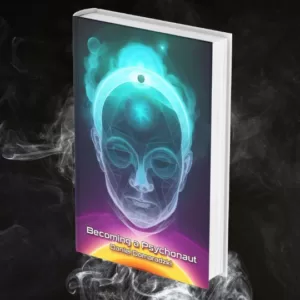In the world of fitness, High-Intensity Interval Training (HIIT) has gained immense popularity, often touted for its ability to torch calories even after you’ve finished your workout. This “afterburn effect”, known as Excess Post-exercise Oxygen Consumption (EPOC), has become a cornerstone of HIIT’s appeal. But does EPOC truly live up to the hype? Let’s dive into the science and uncover the truth about EPOC and its role in boosting metabolism and achieving weight loss goals.
Table of Contents
What Exactly is EPOC?
EPOC refers to the increased amount of oxygen your body consumes after a workout compared to its resting state. This heightened oxygen consumption translates to a greater calorie burn as your body diligently works to restore itself to its pre-exercise state. This process can last anywhere from 15 minutes to 48 hours, with the duration and magnitude influenced by factors like the intensity and type of exercise.
During EPOC, your body is like a finely tuned machine undergoing a series of intricate processes:
- Replenishing Energy Stores: Your body needs to restore its primary energy source, the phosphagen system, which comprises creatine phosphate and ATP (adenosine triphosphate). Additionally, lactate, a byproduct of intense exercise, is converted back to pyruvate to be used as fuel.
- Re-oxygenating Blood and Restoring Hormones: Intense physical activity depletes oxygen levels in your blood and muscles. EPOC helps replenish these oxygen stores and restore the balance of circulatory hormones.
- Cooling Down: As your body works hard during exercise, its temperature rises. EPOC helps regulate your internal thermostat and bring your core temperature back to normal.
- Normalizing Heart Rate and Breathing: After an intense workout, your heart rate and breathing remain elevated. EPOC facilitates the gradual return of these vital functions to their resting rates.
- Physiological Responses: You may experience increased respiration and heart rate, along with elevated levels of hormones like cortisol, adrenaline, and noradrenaline. Your body focuses on restoring oxygen levels in venous blood, skeletal muscle blood, and myoglobin, re-synthesizing lactate to glycogen, and decreasing body temperature.
EPOC and Metabolism: The Connection
EPOC has a direct impact on your metabolism, the process by which your body converts the food you eat into usable energy (ATP). During EPOC, your body continues to utilize oxygen to convert stored nutrients and calories into ATP, effectively giving your metabolism a boost.
But EPOC’s role in metabolism extends beyond simply burning calories. It also plays a crucial role in fuel management and fat oxidation. This means that EPOC not only helps you burn more calories but also optimizes how your body utilizes different fuel sources, potentially enhancing fat burning for energy.
The intensity of your workout is a key factor in determining the magnitude of the EPOC effect. Higher intensity workouts, such as HIIT, create a larger “oxygen debt,” leading to a more prolonged and significant EPOC response.
EPOC and Weight Loss: A Helping Hand, Not a Magic Bullet
While EPOC undoubtedly contributes to calorie expenditure, it’s not a magical weight-loss solution on its own. The actual number of calories burned through EPOC varies depending on factors like workout intensity, duration, and individual differences in metabolism.
Studies suggest that EPOC can increase calorie burn by 6% to 15% after a workout1. For example, if you burn 300 calories during exercise, you might burn an extra 18 to 45 calories through EPOC. While this may seem modest, these extra calories can accumulate over time and contribute to weight loss as part of a comprehensive fitness plan.
One study found that a 45-minute vigorous-intensity workout resulted in a significant EPOC, increasing calorie burn by 190 kcal2. This highlights the potential of EPOC to contribute meaningfully to your overall calorie expenditure, especially with higher-intensity exercise.
HIIT vs. Other Exercise: Does HIIT Reign Supreme for EPOC?
HIIT is often championed as the most effective way to maximize EPOC, but research suggests that other forms of exercise can also elicit a significant response.
One study compared EPOC after HIIT and continuous aerobic exercise in amateur runners. While HIIT did show a slightly higher EPOC, the difference was not statistically significant3. Interestingly, HIIT appeared to increase lipid metabolism during recovery, potentially favoring fat burning.
Resistance training has also been shown to produce a greater EPOC response compared to continuous aerobic exercise. This is likely because resistance training creates a greater disruption to the body’s homeostasis, requiring more energy to recover.
It’s important to note that there’s no single definitive study comparing EPOC across different HIIT modalities (treadmill, elliptical, cycling). More research is needed to determine the most effective HIIT approach for maximizing EPOC.
Potential Drawbacks and Considerations
While EPOC offers valuable benefits, it’s important to consider potential drawbacks and limitations:
- Individual Variability: The EPOC response can vary significantly from person to person, depending on factors like fitness level, genetics, and exercise history.
- Not a Substitute for Other Strategies: EPOC should not be considered a replacement for other important weight management strategies, such as a balanced diet and regular physical activity.
- Limitations for Certain Individuals: EPOC as a primary strategy for weight loss may be less effective for non-athletic individuals or those with mobility limitations.
Synthesis and Conclusion
EPOC, or the “afterburn effect,” is indeed a real and valuable physiological process that can elevate your metabolism and increase calorie expenditure after exercise. While often associated with HIIT, EPOC is not exclusive to this training method. Resistance training and even continuous aerobic exercise can also induce a significant EPOC response.
So, does EPOC live up to the hype in the HIIT world? The answer is nuanced. While HIIT can effectively trigger EPOC, it’s not the only way, and the calorie-burning benefits of EPOC, while real, are often overstated.
Here’s a more comprehensive perspective:
- EPOC is a valuable contributor, not a magic bullet: It plays a supporting role in weight management and overall fitness, but it’s not a substitute for a balanced diet and consistent exercise.
- Intensity matters: Higher-intensity workouts generally lead to a greater EPOC effect, but this doesn’t mean that other forms of exercise are ineffective.
- Individual responses vary: The extent to which you benefit from EPOC depends on various individual factors.
Ultimately, EPOC is a valuable tool in your fitness arsenal, but it’s crucial to maintain realistic expectations and focus on a holistic approach to health and wellness. By incorporating EPOC-inducing workouts alongside a balanced lifestyle, you can optimize your fitness journey and achieve your goals more effectively.




